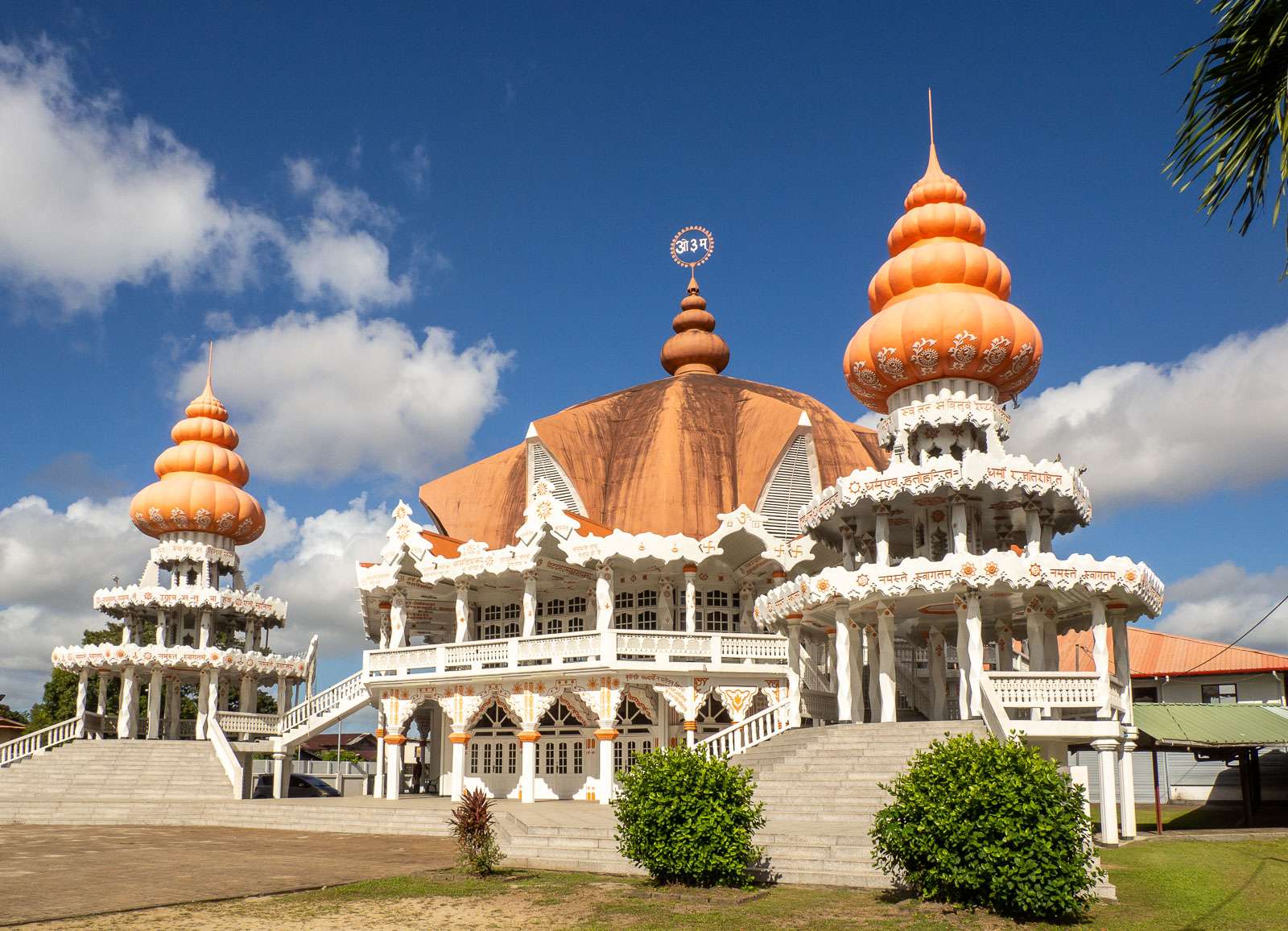
Paramaribo, the capital city of Suriname, is a fascinating place filled with rich history and vibrant culture. Situated on the banks of the Suriname River, this charming city is a melting pot of diverse influences, blending Dutch, African, Indian, and indigenous cultures. Paramaribo may not be as well-known as other global capitals, but it holds its own unique charm and has plenty to offer to both locals and tourists alike.
In this article, we will delve into the heart of Paramaribo and explore 42 interesting facts about this captivating city. From its colonial past to its architectural marvels, delicious cuisine, and natural wonders, we will uncover the hidden gems and intriguing tidbits that make Paramaribo a truly remarkable destination.
Key Takeaways:
- Paramaribo, the capital of Suriname, is a vibrant city with a rich history, diverse culture, and stunning natural beauty, making it a fascinating destination for travelers to explore.
- From UNESCO World Heritage sites to colorful street markets and lush nature reserves, Paramaribo offers a unique and memorable experience, showcasing the warmth and hospitality of its people.
Historical Center of Paramaribo is a UNESCO World Heritage Site.
Recognized for its unique colonial architecture, the Historical Center of Paramaribo was inscribed on the UNESCO World Heritage List in 2002.
Paramaribo is the capital and largest city of Suriname.
Located on the northern coast of South America, Paramaribo serves as the political, economic, and cultural hub of the country.
The city was founded by the English in 1613.
Originally established as a trading post, Paramaribo grew under Dutch rule in the 17th century and became a prominent center of commerce.
Paramaribo is known for its diverse ethnic population.
The city is a melting pot of cultures, with inhabitants of African, Indian, Javanese, Chinese, and Indigenous heritage, contributing to a rich tapestry of traditions and cuisine.
The Suriname River flows through Paramaribo.
This majestic river serves as a lifeline for the city, providing transportation, irrigation, and scenic beauty.
Jules Albert Wijdenbosch Bridge is a prominent landmark.
Spanning the Suriname River, the Wijdenbosch Bridge is an architectural marvel and an important transportation link between Paramaribo and the eastern districts of Suriname.
The city has a tropical rainforest climate.
Paramaribo enjoys warm temperatures year-round, with an average annual rainfall of around 2,000 millimeters.
Fort Zeelandia is a historic fortress in Paramaribo.
Built in the 17th century, this fort is a reminder of Paramaribo’s colonial past and now serves as a museum showcasing Suriname’s history.
Paramaribo is home to numerous mosques, synagogues, and churches.
The city’s religious diversity is reflected in its architectural landmarks, representing various faiths and serving as symbols of tolerance and unity.
The Central Market of Paramaribo is a vibrant hub of activity.
Here, locals and visitors can explore a wide array of fresh produce, spices, crafts, and local delicacies.
The wooden St. Peter and Paul Cathedral is an iconic landmark.
With its distinctive architectural style and rich history, the St. Peter and Paul Cathedral is a cherished symbol of Paramaribo.
The Surinaams Museum offers insights into Suriname’s cultural heritage.
Located in Paramaribo, this museum showcases the art, history, and traditions of Suriname’s diverse ethnic groups.
Paramaribo is renowned for its vibrant nightlife.
The city comes alive after dark with a wide range of bars, clubs, and entertainment venues catering to different tastes and preferences.
Independence Square is a significant landmark in Paramaribo.
This square holds great historical importance, as it was the site where Suriname officially gained independence from the Netherlands in 1975.
Paramaribo is a hub for street food lovers.
Exploring the city’s bustling streets offers an opportunity to savor traditional Surinamese dishes, such as roti, pom, and bara.
The Presidential Palace is an architectural gem.
This grand colonial-style building serves as the official residence of the President of Suriname and is a symbol of the country’s political power.
Paramaribo is home to the Neveh Shalom Synagogue.
Constructed in 1835, this synagogue is one of the oldest in the Western Hemisphere and stands as a testament to Suriname’s Jewish heritage.
The Tjin-A-Kie Temple is a notable Hindu temple in Paramaribo.
Adorned with intricate carvings and colorful decorations, this temple is a sacred place of worship for the Hindu community in Suriname.
Paramaribo is known for its vibrant street art scene.
The city’s walls and buildings are adorned with colorful murals, reflecting the creativity and artistic expression of local and international artists.
The Surinamese cuisine in Paramaribo is a fusion of flavors.
Influenced by African, Indian, Indonesian, Chinese, and Dutch culinary traditions, Surinamese cuisine offers a unique and diverse gastronomic experience.
Paramaribo is surrounded by lush nature reserves.
From the breathtaking Brownsberg Nature Park to the enchanting Galibi Nature Reserve, the city provides easy access to captivating natural wonders.
Waterfront Paramaribo is a popular gathering place.
The picturesque waterfront area offers stunning views of the Suriname River and serves as a social hub for locals and tourists alike.
The Peperpot Nature Park is a haven for birdwatching.
Nature enthusiasts can explore this former coffee and cocoa plantation, which is now a protected area teeming with bird species.
Paramaribo hosts an annual Carnival celebration.
Colorful parades, vibrant music, and exuberant costumes take over the streets of Paramaribo during the Carnival season.
The Central Suriname Nature Reserve is a UNESCO World Heritage Site.
Located near Paramaribo, this vast protected area houses diverse ecosystems and is home to numerous endangered plant and animal species.
Paramaribo is known for its idyllic palm-fringed beaches.
Just a short drive from the city, visitors can enjoy the sun, sand, and surf along the pristine coastline.
The Jodensavanne is a historic Jewish settlement near Paramaribo.
Once a flourishing Jewish community, this area preserves the remnants of a synagogue and Jewish tombstones, offering a glimpse into Suriname’s Jewish history.
Paramaribo is a vibrant center for visual and performing arts.
The city hosts numerous art galleries, theaters, and cultural events that showcase Surinamese talent and creativity.
The Palmentuin is a tranquil park in Paramaribo.
With its rows of towering palm trees, this oasis provides a peaceful escape from the bustling city.
Paramaribo is home to the largest wooden building in the Western Hemisphere.
The Ministry of Finance building, also known as the “Big House” or “Houten Stad,” is an architectural marvel made entirely of wood.
The Surinaamsche Bank building is an iconic landmark.
With its neoclassical architecture and prominent clock tower, this building stands as a symbol of Suriname’s financial sector.
Paramaribo is a haven for wildlife enthusiasts.
Exploring the nearby nature reserves offers opportunities to spot exotic bird species, monkeys, caimans, and other fascinating creatures.
The Saint Rose of Lima Catholic Church is a prominent religious site in Paramaribo.
Built in the 19th century, this church showcases stunning stained glass windows and intricate woodwork.
Paramaribo is known for its lively music scene.
From traditional Surinamese music to Caribbean beats and international genres, the city offers a vibrant mix of musical experiences.
Paramaribo boasts a well-preserved colonial architecture.
The city’s historic buildings and colorful wooden houses are a testament to its colonial past and add to its unique charm.
The Nieuwe Haven is a bustling harbor in Paramaribo.
Ships and boats continuously come and go, connecting Paramaribo to other regions and providing a glimpse into the city’s maritime heritage.
Paramaribo is a paradise for birdwatchers.
With its rich biodiversity, the city and its surroundings offer ample opportunities to observe a wide variety of bird species.
The Mariënburg Sugar Factory is a historical site near Paramaribo.
Once a thriving sugar plantation, this area now serves as a reminder of Suriname’s colonial past and the history of the sugar industry.
Paramaribo is known for its vibrant street markets.
Exploring the lively markets allows visitors to immerse themselves in the local culture and discover a wide range of goods and produce.
The Palm Garden is a beautiful park in Paramaribo.
This green oasis offers a serene environment to relax, walk, or have a picnic amid the city’s bustling streets.
Paramaribo is a gateway to the interior of Suriname.
From here, adventurous travelers can embark on journeys to remote rainforests, indigenous villages, and stunning natural landscapes.
The people of Paramaribo are known for their friendliness and hospitality.
Visitors to the city often experience a warm and welcoming atmosphere, creating memorable interactions and lasting impressions.
With its rich history, cultural diversity, natural beauty, and welcoming atmosphere, it’s no wonder that Paramaribo is a fascinating destination worth exploring. Whether you’re strolling through the UNESCO-listed Historical Center, indulging in the flavors of Surinamese cuisine, or immersing yourself in the vibrant arts scene, Paramaribo offers a unique and memorable experience for all who visit.
Conclusion
In conclusion, Paramaribo boasts a rich history, vibrant culture, and stunning natural beauty. From its colonial architecture and UNESCO World Heritage Site status to its diverse culinary scene and lively festivals, there is something for everyone to enjoy in this charming city. Whether you’re exploring the bustling central market, strolling along the picturesque waterfront, or immersing yourself in the local art and music scene, Paramaribo is sure to leave a lasting impression. So, pack your bags and get ready to discover the many wonders that Paramaribo has to offer!
FAQs
Q: What is the capital city of Suriname?
A: The capital city of Suriname is Paramaribo.
Q: Is Paramaribo a safe city to visit?
A: Yes, Paramaribo is generally considered a safe city for tourists. However, it is always advisable to take necessary precautions and be aware of your surroundings, especially when exploring unfamiliar areas after dark.
Q: What is the best time to visit Paramaribo?
A: The best time to visit Paramaribo is during the dry season, which runs from February to August. During this time, the weather is generally warm and sunny, and outdoor activities can be enjoyed to the fullest.
Q: Can I drink tap water in Paramaribo?
A: It is generally recommended to drink bottled water in Paramaribo to avoid any potential stomach upsets. However, many hotels and restaurants also offer filtered or purified water for drinking purposes.
Q: What are some must-visit attractions in Paramaribo?
A: Some must-visit attractions in Paramaribo include the historic inner city with its ornate wooden buildings, Fort Zeelandia, Neveh Shalom Synagogue, Independence Square, and the Central Market.
Q: Are English speakers widely understood in Paramaribo?
A: Yes, English is widely understood in Paramaribo, especially in tourist areas. However, it is always helpful to learn a few basic phrases in Dutch, as it is the official language of Suriname.
Q: What is the local currency in Paramaribo?
A: The local currency in Paramaribo is the Surinamese dollar (SRD). However, US dollars and Euros are also widely accepted in many establishments.
Paramaribo's rich history, vibrant culture, and stunning natural beauty make it a must-visit destination for any traveler. From its UNESCO World Heritage Site city center to its lush nature reserves, Suriname's capital offers a unique blend of experiences that will leave you wanting more. If you're curious about the rest of this fascinating country, be sure to check out our article on 38 intriguing facts about Suriname. Immerse yourself in the diverse traditions, breathtaking landscapes, and warm hospitality that make this small South American nation an unforgettable gem.
Was this page helpful?
Our commitment to delivering trustworthy and engaging content is at the heart of what we do. Each fact on our site is contributed by real users like you, bringing a wealth of diverse insights and information. To ensure the highest standards of accuracy and reliability, our dedicated editors meticulously review each submission. This process guarantees that the facts we share are not only fascinating but also credible. Trust in our commitment to quality and authenticity as you explore and learn with us.


